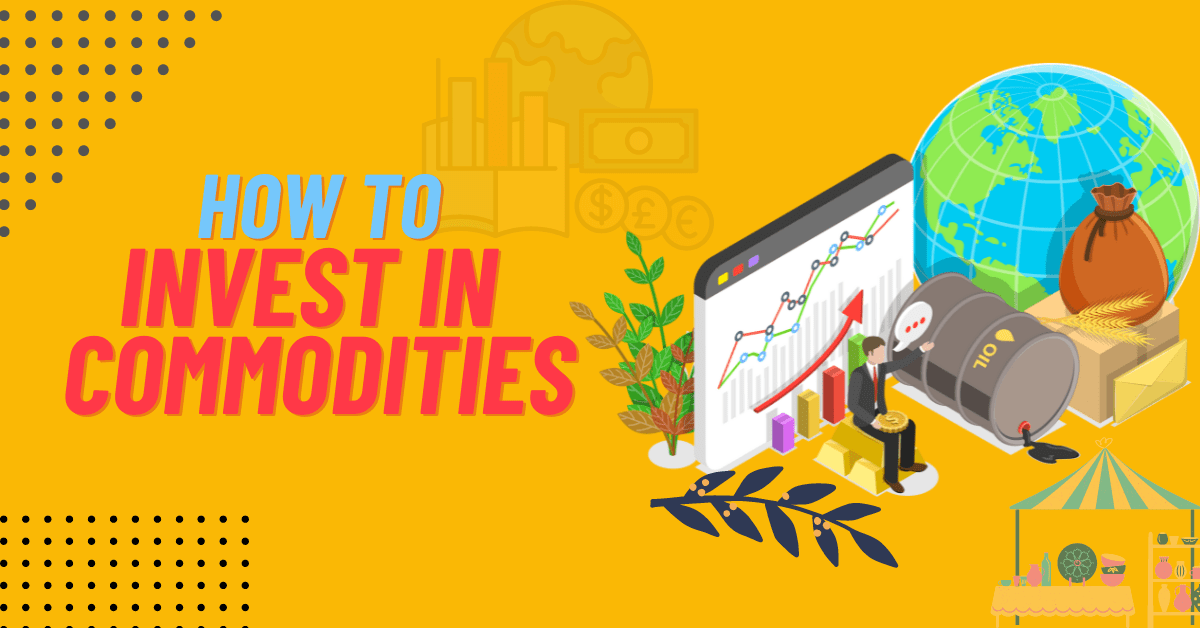Introduction
Investing in commodities can be a profitable venture, providing diversification and a hedge against inflation. Whether you’re a seasoned investor or a newcomer to the commodities market, understanding the fundamentals and taking a strategic approach is critical to success. In this comprehensive guide, we will go over how to invest in commodities and provide valuable tips to help you make informed decisions and navigate this volatile market.
Understanding Commodities
Commodities refer to physical goods or raw materials that are traded on exchanges worldwide. They are categorized into two broad categories: hard commodities and soft commodities. Soft commodities encompass agricultural goods such as wheat, corn, coffee, soybeans, and sugar, among others. On the other hand, hard commodities include natural resources like gold, silver, oil, copper, and other metals.
Investing in commodities presents unique considerations and challenges compared to traditional financial assets like stocks and bonds. Prices of commodities are influenced by various factors such as supply and demand dynamics, geopolitical events, weather conditions, and global economic trends. Additionally, commodity markets can be volatile, making them subject to sudden price fluctuations.
However, despite the challenges, commodity investing can offer diversification benefits and serve as a hedge against inflation and currency depreciation. For investors willing to understand and navigate the complexities of commodity markets, it can potentially be a profitable venture.
Why Invest in Commodities?
-
- Portfolio Diversification: Portfolio diversification is essential for managing investment risk, and commodities play a valuable role in this strategy. Unlike traditional financial assets, commodities often exhibit a low correlation with other markets, making them effective diversifiers. During times of market downturns or economic uncertainty, commodities can provide a hedge, offering protection against losses in other asset classes. By including commodities in a diversified portfolio, investors can spread risk more effectively and potentially enhance overall returns over the long term, thereby improving the resilience of their investment portfolio.
-
- Portfolio Stability: Enhancing portfolio stability is achievable by diversifying investments to include commodities. Unlike traditional assets, commodity markets often exhibit different price movements, offering a hedge against volatility in other investment classes. By incorporating commodities into a portfolio, investors can mitigate risk and achieve greater stability, as their performance tends to be less correlated with stocks and bonds. This diversification strategy helps cushion against market fluctuations and enhances the overall resilience of the investment portfolio, providing a more balanced approach to wealth management.
-
- Inflation Hedge: Certain commodities, notably gold and silver, have historically functioned as effective hedges against inflation. As inflation erodes the purchasing power of fiat currencies, the value of these precious metals tends to rise, providing investors with a safeguard against the diminishing value of their holdings. This relationship between inflation and the value of commodities like gold and silver stems from their intrinsic properties as tangible assets with limited supply. Consequently, investors often allocate a portion of their portfolios to these commodities as a means of preserving wealth and mitigating the adverse effects of inflation on their investment portfolios.
-
- Supply And Demand Dynamics: Supply and demand dynamics are fundamental economic principles that significantly influence commodity markets. Various factors, including weather patterns, international economic conditions, and geopolitical events, can affect the supply and demand for commodities. Changes in supply, such as disruptions due to adverse weather conditions or geopolitical tensions, can lead to fluctuations in commodity prices. Similarly, shifts in demand resulting from changes in consumer preferences or global economic trends can also impact commodity prices. Understanding these dynamics is essential for participants in commodity markets to make informed decisions and manage risk effectively.
Different Ways to Invest in Commodities
1. Futures Contracts
-
- Futures contracts are arrangements to purchase or sell a certain amount of a good at a fixed price at a later time.
-
- Commodity price fluctuations are speculative and do not require ownership of the actual asset.
-
- Trading futures carries a larger degree of risk and necessitates a solid understanding of the market.
2. Exchange-Traded Funds (ETFs)
-
- Investors can easily obtain exposure to commodities through exchange-traded funds (ETFs) without having to deal with futures contracts.
-
- ETFs that track commodities monitor the performance of a particular commodity or a group of commodities.
-
- Examples are the United States Oil Fund (USO) for oil and SPDR Gold Shares (GLD) for gold.
3. Commodity Mutual Funds
-
- Commodity-focused mutual funds invest in a diverse range of assets associated with commodities.
-
- These funds, which are overseen by qualified fund managers, provide investors wishing to diversify into commodities with a hands-off approach.
4. Physical Ownership
-
- By buying and storing commodities, investors can become the physical owners of those goods. When it comes to precious metals like gold and silver, this is more sensible.
-
- Having tangible goods means making arrangements for secure storage and protection.
5. Stocks of Commodity Companies
-
- Another indirect means of exposure is through investing in the stocks of companies involved in the production or distribution of commodities.
-
- Purchasing stock in a gold mining company, for instance, gives one access to the gold market.
Factors to Consider Before Investing In
-
- Market Research: Conduct thorough market research on specific commodities of interest, identifying key factors influencing their pricing. Explore supply chain dynamics, geopolitical events, and global demand trends to gain insights into market dynamics. Understanding these variables is essential for making informed investment decisions and navigating the complexities of commodity markets effectively. By staying informed and analyzing relevant data, investors can capitalize on opportunities and mitigate risks in commodity trading.
-
- Storage Costs and Logistics: Before opting for physical ownership of commodities, it’s crucial to assess storage logistics and costs. While assets like gold can be securely stored in vaults, other commodities may require specialized facilities. Understanding the logistics involved ensures proper storage and safeguards your investment. Additionally, factoring in storage costs allows for informed decision-making regarding the feasibility of physical ownership versus alternative storage options.
-
- Diversification: Diversification is key to managing risk in commodity investments. By allocating your investment across various commodity types, you can mitigate the impact of volatility in any single market. This strategy promotes stability in long-term investing, as it reduces the vulnerability to fluctuations in any particular commodity sector. A diverse portfolio helps to balance potential losses and gains, ensuring a more resilient investment approach in the dynamic commodity market landscape.
-
- Risk Tolerance: Assess your risk tolerance before investing in commodities, as prices can fluctuate due to numerous unforeseen factors. Be prepared for market changes by understanding your comfort level with risk. Whether it’s geopolitical events, economic shifts, or natural disasters, these variables can impact commodity prices. Evaluate your ability to weather such fluctuations and adjust your investment strategy accordingly. Understanding your risk tolerance ensures you’re better equipped to navigate the unpredictable nature of commodity markets.
-
- Market Timing: Successful commodity investing hinges on precise timing. Vigilance towards market shifts, economic indicators, and global events is paramount. Keeping abreast of developments ensures informed decisions, capitalizing on price fluctuations and maximizing returns. Whether it’s monitoring supply-demand dynamics, geopolitical tensions, or technological advancements, astute observation is key. Seizing opportunities amidst volatile markets demands proactive engagement, where every insight becomes a strategic advantage. In the realm of commodities, timing isn’t just important; it’s the ultimate determinant of success.
Bottom Line
Commodity investing can provide diversification and potential returns, making it a worthwhile addition to any investment portfolio. You can confidently navigate the complexities of the commodities market by being aware of the different investment options available to you, the variables that affect commodity prices, and how to apply risk management techniques.
Also Read: What Is Commodity? Understanding the Basics






Thank you for your sharing. I am worried that I lack creative ideas. It is your article that makes me full of hope. Thank you. But, I have a question, can you help me?
555
555
555
555
555
555
555
555
555
555
555
555
555
555
555
555